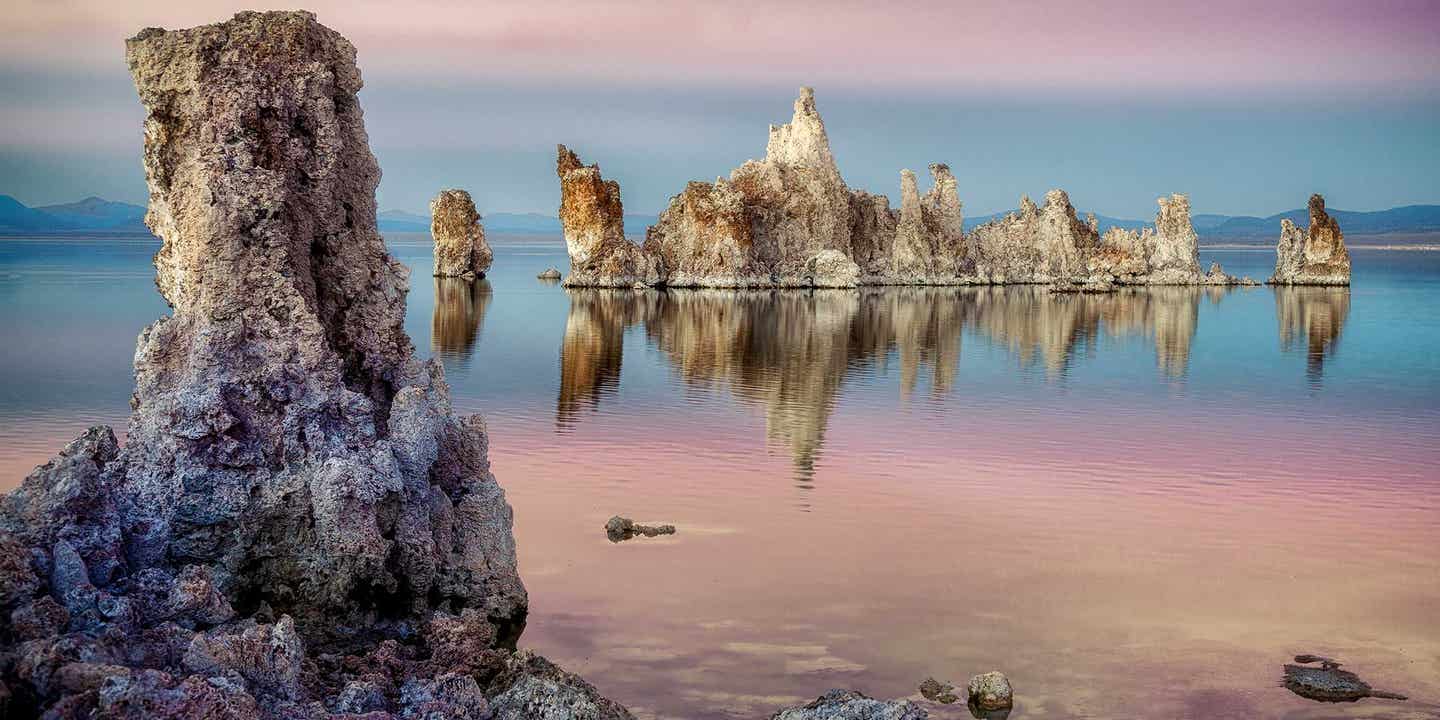Ancient soda lakes could reveal how life began on Earth
New research reveals that large soda lakes on early Earth may have stored enough phosphorus to support the rise of life.

Large soda lakes may have held the key to life’s beginnings by storing high phosphorus levels needed for early chemistry. (CREDIT: Adobe Stock)
The earliest days of Earth held secrets that scientists are still trying to uncover. One of the greatest mysteries is how life began. A key part of the answer lies in a rare element: phosphorus. This mineral plays a major role in the molecules that make life possible. It forms the backbone of DNA and RNA, the carriers of genetic information. It also powers cells through a molecule called ATP, which stores and delivers energy.
But there’s a problem. Phosphorus is not easy to find at the Earth's surface, and this was just as true billions of years ago as it is now. So how did life get enough of it to start?
Why Phosphorus Matters
Scientists already know that carbon and nitrogen are critical for life. These elements are more common and move easily through the atmosphere and water. Phosphorus, on the other hand, tends to get stuck in rocks and sediments. It doesn't dissolve well in water and doesn't cycle through the environment very quickly.
Life needs a lot of phosphorus to grow. But studies show that prebiotic chemistry — the chemistry that happens before life forms — needs even more. Lab experiments have found that the chemical reactions that led to life need water with phosphorus levels about 10,000 times higher than what’s usually found in lakes or oceans today.
So where could early Earth have stored that much phosphorus in one place?
A New Clue from Ancient Lakes
Craig Walton, a geochemist at ETH Zurich, may have found the answer. He says that large soda lakes could have been the perfect setting. These lakes don’t have outlets like rivers or streams that carry water away. Instead, they lose water only through evaporation. This leaves behind minerals, including phosphorus, which slowly builds up to very high levels.
Related Stories
In a recent study published in Science Advances, Walton explains how some large closed lakes could hold steady, high levels of phosphorus even while supporting early life. “This new theory helps to solve another piece of the puzzle of the origin of life on Earth,” Walton says.
Not all soda lakes work for this. Smaller ones don’t hold enough phosphorus for long. If life started there, it would quickly use up the phosphorus before more could enter the lake. “As soon as life develops in them, their phosphorus supply would be depleted faster than it is replenished. This would nip in the bud both the chemical reactions and the developing life,” says Walton. But larger lakes? They’re a different story.
Lessons from a Lake in California
Take Mono Lake, for example. This lake in California is more than twice the size of Lake Zurich. It has nearly 1 millimolar of dissolved phosphorus at a steady state. That’s an unusually high amount for natural waters. Yet the lake also supports a wide variety of life forms — from algae to bacteria to brine shrimp — despite this high phosphorus demand.
This proves something important: large soda lakes can hold on to their phosphorus, even when life begins to use it. Why? Because the phosphorus constantly flows into the lake with incoming river water. And since the lake has no outlet and loses water only through evaporation, the phosphorus stays put.
Walton believes this balance is key. It explains how a lake can both support high biological activity and still keep phosphorus levels high enough to kickstart prebiotic chemistry.
Early Earth Was a Perfect Setting
The early Earth was covered in craters from asteroid impacts and shaped by heavy volcanic activity. These features helped form many closed-basin lakes — the kind Walton believes could have given rise to life. These lakes had no rivers draining them and were often located in dry, hot regions where water evaporated quickly.
This kind of environment made it possible for phosphorus to build up in large amounts. Once it reached high enough levels, prebiotic reactions could begin. And when life appeared, the phosphorus didn’t vanish. The size and chemistry of the lake helped maintain a steady supply.
Walton’s study builds on earlier work by researchers who suggested soda lakes might be key to the mystery of life’s origins. In 2020, scientists at the University of Washington raised the idea that these lakes could have hosted early life. Walton took the idea further by showing that only large soda lakes could maintain enough phosphorus long enough to make life possible.
Rethinking the Cradle of Life
For years, some scientists believed life may have started in small warm pools — places like those described by Charles Darwin. But these small pools likely couldn’t hold onto their phosphorus. Their size made them vulnerable to sudden changes and fast depletion of nutrients.
Walton's work points to larger, more stable settings. Large soda lakes offered just the right mix of conditions. They collected phosphorus from rivers, trapped it through evaporation, and held enough water to support the rise of early organisms. Their high phosphorus levels supported the chemical reactions needed before life could start, and their stability kept those reactions going.
The idea changes how we think about the origin of life. Instead of bubbling ponds, life may have started in vast, salty lakes under the harsh sun of ancient Earth.
A Bigger Picture of Life’s Beginnings
Walton’s research adds a fresh layer to the story of life’s origins. It shows that the right environment matters just as much as the right chemicals. In the case of phosphorus, nature had to find a way to gather enough of it, hold onto it, and use it slowly. Large soda lakes provided that setting. They acted like natural test tubes, giving early Earth a way to store up rare elements and support the slow, complex reactions that led to life.
Today, Mono Lake stands as a living example. Its phosphorus-rich waters host a thriving ecosystem. It offers a glimpse into the kind of place where life might have first taken hold — not in a spark or a flash, but through steady buildup and balance.
If the early Earth had enough of these lakes, the rise of life may have been not just possible, but likely.
Note: The article above provided above by The Brighter Side of News.
Like these kind of feel good stories? Get The Brighter Side of News' newsletter.



